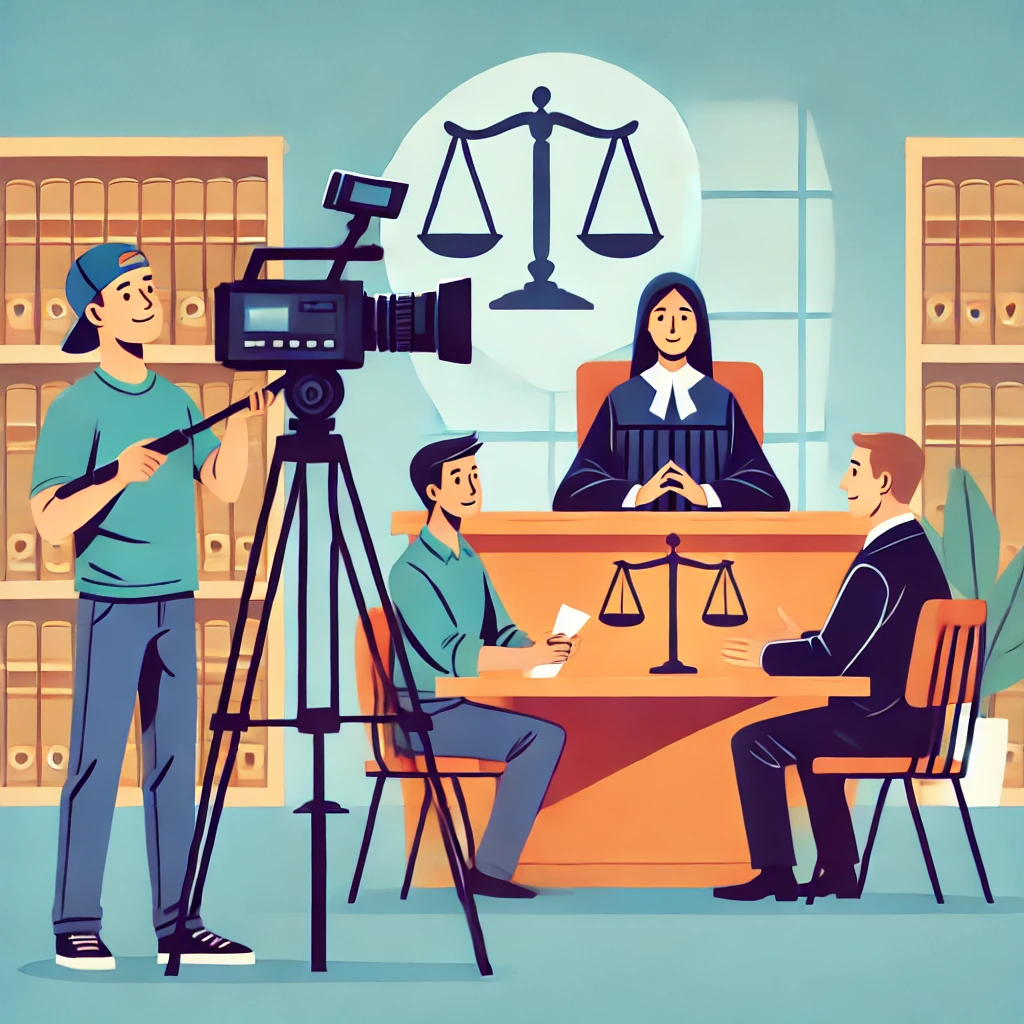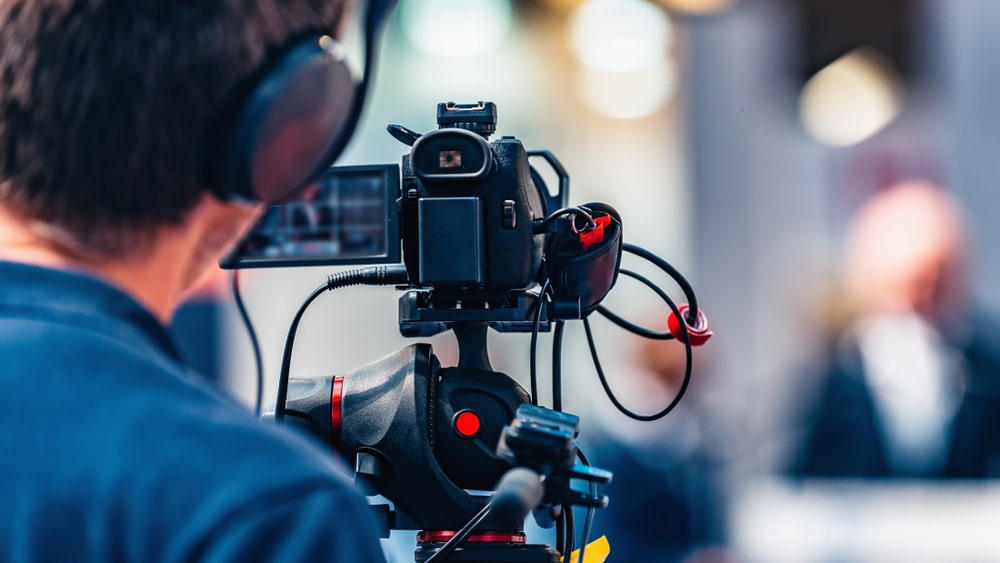The Role of Legal Videography in Documenting Depositions and Trials
The Role of Legal Videography in Documenting Depositions and Trials
Blog Article
Secret Advantages of Using Videography in Legal Instances
The integration of videography in lawful cases presents a variety of critical advantages that can dramatically influence test outcomes. By boosting proof presentation and improving witness credibility, videography works as an effective tool to engage jurors and share complicated stories effectively. Moreover, this tool protects critical testaments, guaranteeing that important information is not lost to memory degeneration. As the lawful landscape continues to develop, the effects of leveraging videography in test setups merit closer evaluation, especially in understanding exactly how these benefits convert right into concrete outcomes in the courtroom.
Boosted Evidence Presentation
Improved evidence discussion with videography has reinvented the way legal instances are argued and recognized in the court room. By integrating high-quality video clip recordings into lawful procedures, attorneys can share intricate details in a more understandable and engaging fashion - Legal Videography. Videography enables the visualization of evidence, making it less complicated for discretionary to understand the context and value of the provided realities
Along with improving quality, videography can likewise capture real-time events, offering a genuine representation of events pertinent to a case. This immediacy can significantly affect the persuasiveness of a disagreement, as aesthetic evidence commonly reverberates more highly than created paperwork. Video evidence can include crucial aspects such as body language, tone of voice, and ecological elements, all of which add to a more holistic understanding of the case.
Making use of videography likewise enables reliable company of proof, allowing attorneys to provide their arguments in a logical and meaningful way. By purposefully including video into their discussions, attorneys can assist in a more effective analysis of the proof, eventually causing informed decision-making by the court. The transformative power of videography in lawful contexts is both undeniable and important.
Improved Witness Integrity

Video clip evidence can also mitigate prospective biases that may develop from the witness's appearance or mannerisms in an online setup. By presenting a well-produced video, legal groups can guarantee that the emphasis stays on the content of the testament as opposed to extraneous variables that could undermine trustworthiness. Moreover, the opportunity to review recorded statements can strengthen witness consistency, as inconsistencies can be addressed prior to test, bring about even more trustworthy testaments.
Furthermore, the permanence of videography provides a secure versus memory degeneration or false impression over time. By having a clear, proven account of witness declarations, lawful professionals can develop a stronger instance, strengthening the overall credibility of the witness and, subsequently, the stability of the judicial procedure.
Involving Jury Experience
Videography can significantly elevate the jury's interaction during lawful procedures. By incorporating high-quality video discussions, legal groups can capture and preserve the focus of jurors, transforming complex info into aesthetically compelling narratives. This interaction is essential, as jurors frequently have a hard time to absorb dense lawful terminology and intricate details provided only via traditional ways.
Video clip evidence allows jurors to witness occasions as they unravelled, offering context that created testimonies might do not have. Using vibrant visuals can stimulate emotional responses, making the case extra remarkable and relatable. Monitoring video footage or reenactments can illustrate crucial minutes, making it possible for jurors to visualize the proof in an engaging way.
In addition, videography can assist in an extra interactive experience. Jurors can see and listen to witnesses, which includes a layer of credibility and immediacy that created transcripts can not duplicate. This multi-sensory approach fosters deeper understanding and retention of the here and now material.

Effective Instance Narration
A compelling story is important for reliable instance storytelling in the court. Videography works as an effective device to present this story and craft, engaging the court and boosting their understanding of the case. By aesthetically showing the occasions bring about the legal conflict, videography enables lawyers to illustrate complicated scenarios in a relatable and clear way. This storytelling technique can evoke psychological reactions and foster empathy, developing a deeper link in between the jury and the case.
Incorporating elements such as witness reconstructions, computer animations, and meetings, videography offers a multi-dimensional viewpoint that conventional approaches can not attain - Legal Videography. This graph not only help in clearing up realities yet additionally assists jurors retain vital details. The dynamic nature of video clip can damage down barriers of understanding, making elaborate information much more accessible.
Ultimately, efficient case narration via videography transforms the court experience, permitting attorneys to offer their disagreements in a influential and compelling fashion. By harnessing the power of visuals, attorneys can substantially enhance their capacity to connect vital stories and accomplish beneficial end results for their customers.
Conservation of Statements
Preserving testimonies is a crucial element of legal proceedings, as the accuracy and integrity of witness declarations can significantly impact the outcome of a case. Videography acts as a reliable tool hereof, making sure that testimonies are recorded in their initial context, thus reducing the threat of misconception or distortion with time.
By catching non-verbal and spoken hints, videography gives a detailed account of witness declarations, which can be very useful throughout trial proceedings. This method not just records the material of the testament but likewise protects the demeanor and emotional responses of witnesses, using courts a richer understanding of the testament's reputation and relevance.
Moreover, using videography assists in a much more reliable review of testimonies throughout post-trial assessments or pre-trial preparations. Lawful professionals can review taped statements to clear up information, evaluate incongruities, or develop approaches for interrogation.
Essentially, videography boosts the conservation of testaments, promoting a clear lawful procedure that can result in more fair results. By protecting the integrity of witness declarations, legal practitioners can much better advocate for their clients and maintain the principles of justice.

Verdict
In verdict, the assimilation of videography in legal instances substantially improves the discussion of evidence, boosts witness credibility, and captivates courts with engaging aesthetic web content. This tool assists in effective narration, permitting attorneys to share narratives that resonate deeply with decision-makers. Furthermore, videography functions as a long-term record of statements, minimizing the risk of memory decay. Jointly, these benefits underscore the vital duty Bonuses of videography in modern-day lawful techniques, eventually adding to more educated judicial results.
The assimilation of videography in lawful instances offers a range of calculated advantages that can considerably influence test results.Boosted evidence presentation through videography has reinvented the way legal instances are argued and comprehended in the courtroom.Videography can significantly elevate the court's engagement during lawful proceedings. By visually depicting the occasions leading to the legal conflict, videography permits lawyers to highlight complex circumstances in a relatable and clear manner.In verdict, the assimilation of videography in legal cases significantly enhances the discussion of evidence, bolsters why not check here witness integrity, and astounds juries with involving aesthetic material.
Report this page